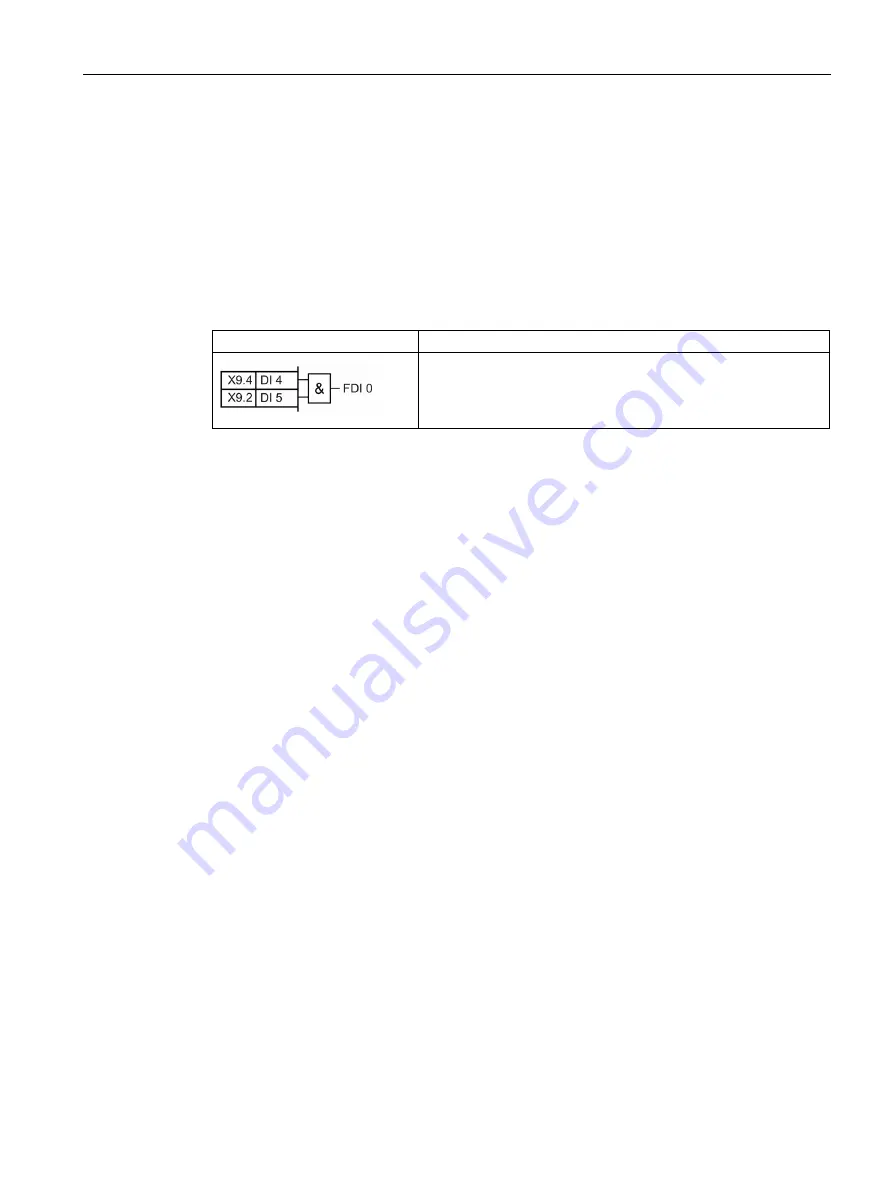
Advanced commissioning
7.2 Inverter control
Converter with control units CU250D-2
Operating Instructions, 04/2015, FW V4.7.3, A5E34261542B AB
117
7.2.1.2
Fail-safe digital input
This manual describes the STO safety function with control using a fail-safe input. Additional
safety functions, additional fail-safe digital inputs, the fail-safe digital output of the converter
and the control of the safety functions using PROFIsafe are described in the Safety
Integrated Function Manual.
Defining a fail-safe digital input
The converter combines digital inputs DI 4 and DI 5 to form a fail-safe digital input.
Pins of the fail-safe digital input Function
You must enable STO to select the STO safety function (Basic
Safety) via FDI 0.
Further information can be found in section Safe Torque Off (STO)
safety function (Page 255).
What devices can be connected?
The safety-related input is designed for the following devices:
●
Connection of safety sensors, e.g. emergency stop command devices or light curtains.
●
Connection of pre-processing devices, e.g. fail-safe control systems and safety relays.
Signal states
The inverter expects signals with the same state at its safety-related input:
●
High signal: The safety function is deselected.
●
Low signal: The safety function is selected.
Fault detection
The inverter evaluates deviations in the two signals of the safety-related input. The inverter
thus detects, for example the following faults:
●
Cable break
●
Defective sensor
The inverter cannot detect the following faults:
●
Cross-circuit of the two cables
●
Short-circuit between signal cable and 24 V power supply






























